Opinion & Analysis
How does the iPING putter app work?
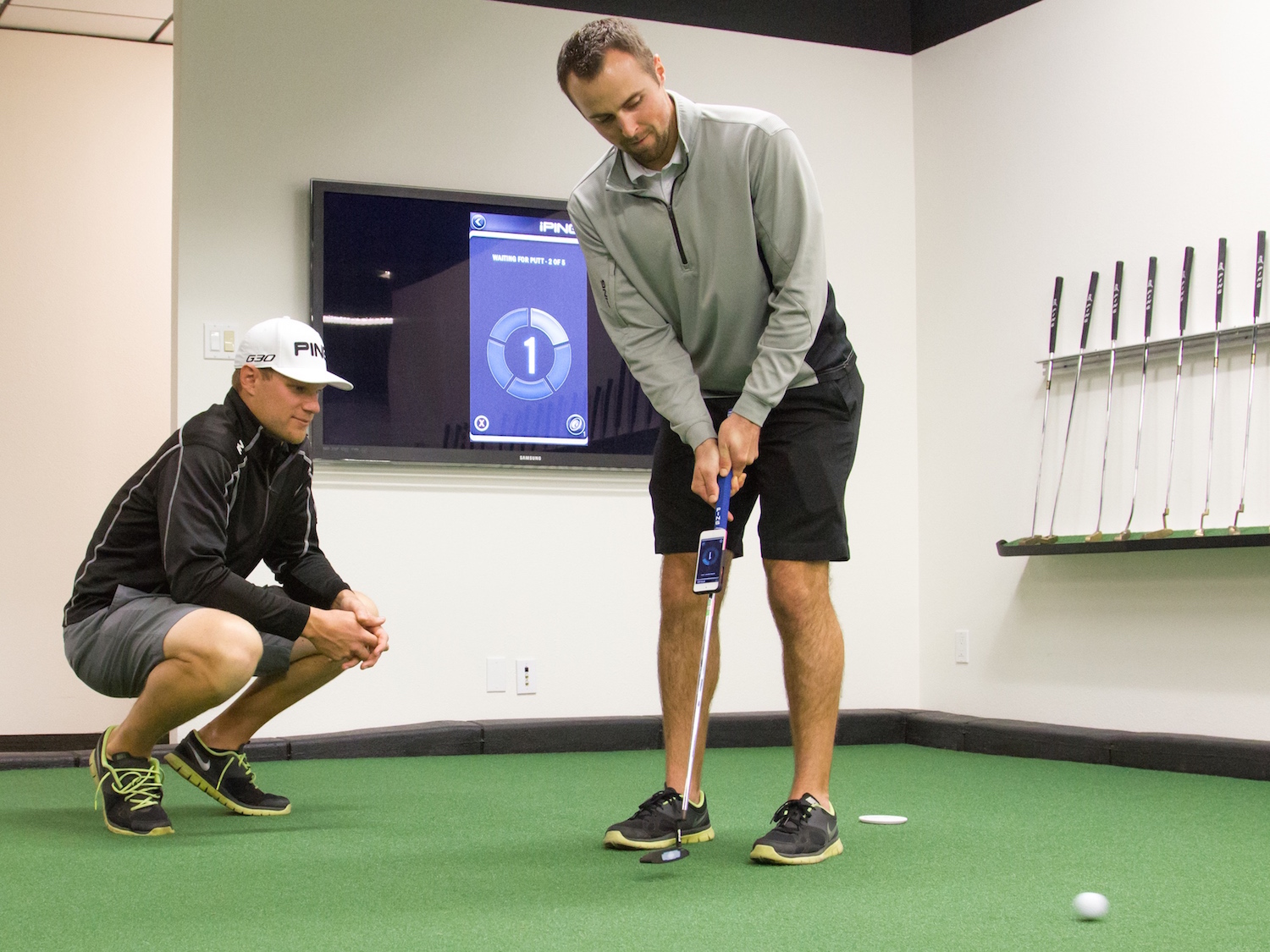
Golf is becoming more and more technological. Well, strictly speaking, the game is the same but the clubs you use and the innovations available to help analyze your swing and your ball flight are advancing fast. Here in the engineering department at Ping, we use simulation and measurement tools today that Karsten Solheim would have dreamed about. It is a great time to be a sports scientist.
iPING’s Beginnings
I remember the day in 2006 when we decided to create our own fitting software using launch-monitor data from new devices on the market such as Vector and TrackMan. I’d spent much of the previous year testing and validating a predictive ball-flight model that could take speeds, angles and spin rates and paint any golf shot into a 3D environment.
Our aim with our nFlight fitting software was to bring fitting into the 21st Century by applying real analysis to launch-monitor data and give meaningful fitting recommendations. We pioneered a few things like optimal shot bands, dispersion ellipses and gapping analysis. A couple of years later we started to talk about applying MEMS technology to measuring a club during a fitting. MEMS (Micro Electro Mechanical Systems) are small, lightweight sensors that measure movement. The devices contain two main types of sensors – three-axis gyroscopes that measure rotational movement (yaw, pitch and roll), and three-axis accelerometers that measure straight-line movement (x, y and z). These sensors are used in many different industries and can track any kind of movement, but they aren’t infallible – they drift over time and there is noise in the data. It’s not realistic to expect the sensors to keep an accurate track of the position of an object for long periods of time, but they are perfect for measuring short-duration movements.
One of our engineers had the idea to take an iPhone 4 and strap it to a putter, using the sensors in the phone itself to measure a putting stroke. I was pretty skeptical about both the sensor quality in the phone and the extra weight affecting the putting stroke, but I was happy to be proven wrong on both counts. The phone is placed close to the grip and doesn’t affect the swing weight of the putter much at all. The extra weight is easily detectible by a golfer but not distracting, even to our tour players. We also verified that the device doesn’t change the putting stroke and gives us accurate enough readings, all for the cost of a plastic cradle.
iPING reliably captures the closing angle (stroke type), impact angle, tempo, shaft lean and lie angle. It is important to note that iPING has no way to know where the hole is, which is typical for any MEMS device. As a result, you will see that many of the attributes we track are internal to the stroke, say from address to impact. We can’t tell you whether the putter face was open or closed to the target because we can’t know where the target is, however, the sensor does know which way is down by measuring gravity and this is how we measure a real shaft lean and lie angle.
Consistency is Key
So, what benefit do we get from tracking a putting stroke? Well, primarily we want to measure consistency. All our research with elite players and tour players shows that even though the motion of their putting strokes varied, the single thing they all have in common is a high degree of consistency when compared to higher-handicap players. Based on our experiments, it doesn’t seem to matter how much arc is in your stroke, if you align at the hole or consistently left or right, or if your tempo is quick or slow, so long as there is consistency in the stroke. The key was that we established a relationship between the consistency (standard deviation, the statistical term for it) of any given attribute when repeated over five putts and a player’s handicap.
Figure 1 (below) shows this relationship for closing angle. We put this together to create a score for a five-putt session in iPING that rates your consistency over five attributes against players of a certain handicap. So if your score for a session is 9.0, you putted like a typical 9-handicap player. Using this score gives players an instant understanding of what is good and bad, and allows someone to quantify whether one session is significantly better than another. For example, you can use this in practice to measure technique changes. Just try using iPING outside in the wind and then inside on a flat green to see what impact that has on your consistency.
iPING Data
When we use iPING in fitting we can take stroke type, impact angle, tempo, shaft lean, and lie angle readings to dial in the best putter for your stroke. Figure 2 shows how we would take each of the five main attributes and recommend a putter that will improve a player’s consistency. This is based on a lot of experiments in the putter lab.
There are a few things that stand out from the nearly 10 million putts registered on iPING.
- There is no such thing as Tour tempo. Tour players have an average tempo of close to 2.0 on iPING, but there are some as low as 1.4 and some over 2.5, all with good putting numbers on the tour.
- Beginner golfers often have a very flat lie angle and upwards of 10 degrees of arc in the stroke. We really don’t ever see this among elite golfers, which would suggest it is detrimental to producing good results. The average tour player has about 5 degrees of arc in his or her putting stroke (on a putt from 10 feet).
- The general public tends to add a little loft with the hands on average; elite and tour players tend to de-loft the putter a little.
- Even among the very best players, very few have the putter face totally square to the hole at address. Some good tour players consistently line up 4 or 5 degrees to one side of the hole. Since we have no evidence that it’s important to consistency, it’s not something we try to “fix.” If putts are consistently missed left or right, then a choice of alignment features and/or hang angle can help that.
The ability to acquire and analyze large sets of information from tools like iPING has certainly helped us answer some big questions about putter design and fitting, and hopefully help a few people make some more putts.
- LIKE124
- LEGIT24
- WOW12
- LOL1
- IDHT1
- FLOP4
- OB1
- SHANK6
19th Hole
Vincenzi’s LIV Golf Singapore betting preview: Course specialist ready to thrive once again

After another strong showing in Australia, LIV Golf will head to Sentosa Golf Club in Singapore looking to build off of what was undoubtedly their best event to date.
Sentosa Golf Club sits on the southern tip of Singapore and is one of the most beautiful courses in the world. The course is more than just incredible scenically; it was also rated 55th in Golf Digest’s top-100 courses in 2022-2023 and has been consistently regarded as one of the best courses in Asia. Prior to being part of the LIV rotation, the course hosted the Singapore Open every year since 2005.
Sentosa Golf Club is a par 71 measuring 7,406 yards. The course will require precise ball striking and some length off the tee. It’s possible to go low due to the pristine conditions, but there are also plenty of hazards and difficult spots on the course that can bring double bogey into play in a hurry. The Bermudagrass greens are perfectly manicured, and the course has spent millions on the sub-air system to keep the greens rolling fast. I spoke to Asian Tour player, Travis Smyth, who described the greens as “the best [he’s] ever played.”
Davis Love III, who competed in a Singapore Open in 2019, also gushed over the condition of the golf course.
“I love the greens. They are fabulous,” the 21-time PGA Tour winner said.
Love III also spoke about other aspects of the golf course.
“The greens are great; the fairways are perfect. It is a wonderful course, and it’s tricky off the tee.”
“It’s a long golf course, and you get some long iron shots. It takes somebody hitting it great to hit every green even though they are big.”
As Love III said, the course can be difficult off the tee due to the length of the course and the trouble looming around every corner. It will take a terrific ball striking week to win at Sentosa Golf Club.
In his pre-tournament press conference last season, Phil Mickelson echoed many of the same sentiments.
“To play Sentosa effectively, you’re going to have a lot of shots from 160 to 210, a lot of full 6-, 7-, 8-iron shots, and you need to hit those really well and you need to drive the ball well.”
Golfers who excel from tee to green and can dial in their longer irons will have a massive advantage this week.
Stat Leaders at LIV Golf Adelaide:
Fairways Hit
1.) Louis Oosthuizen
2.) Anirban Lahiri
3.) Jon Rahm
4.) Brendan Steele
5.) Cameron Tringale
Greens in Regulation
1.) Brooks Koepka
2.) Brendan Steele
3.) Dean Burmester
4.) Cameron Tringale
5.) Anirban Lahiri
Birdies Made
1.) Brendan Steele
2.) Dean Burmester
3.) Thomas Pieters
4.) Patrick Reed
5.) Carlos Ortiz
LIV Golf Individual Standings:
1.) Joaquin Niemann
2.) Jon Rahm
3.) Dean Burmester
4.) Louis Oosthuizen
5.) Abraham Ancer
LIV Golf Team Standings:
1.) Crushers
2.) Legion XIII
3.) Torque
4.) Stinger GC
5.) Ripper GC
LIV Golf Singapore Picks
Sergio Garcia +3000 (DraftKings)
Sergio Garcia is no stranger to Sentosa Golf Club. The Spaniard won the Singapore Open in 2018 by five strokes and lost in a playoff at LIV Singapore last year to scorching hot Talor Gooch. Looking at the course setup, it’s no surprise that a player like Sergio has played incredible golf here. He’s long off the tee and is one of the better long iron players in the world when he’s in form. Garcia is also statistically a much better putter on Bermudagrass than he is on other putting surfaces. He’s putt extremely well on Sentosa’s incredibly pure green complexes.
This season, Garcia has two runner-up finishes, both of them being playoff losses. Both El Camaleon and Doral are courses he’s had success at in his career. The Spaniard is a player who plays well at his tracks, and Sentosa is one of them. I believe Sergio will get himself in the mix this week. Hopefully the third time is a charm in Singapore.
Paul Casey +3300 (FanDuel)
Paul Casey is in the midst of one of his best seasons in the five years or so. The results recently have been up and down, but he’s shown that when he’s on a golf course that suits his game, he’s amongst the contenders.
This season, Casey has finishes of T5 (LIV Las Vegas), T2 (LIV Hong Kong), and a 6th at the Singapore Classic on the DP World Tour. At his best, the Englishman is one of the best long iron players in the world, which makes him a strong fit for Sentosa. Despite being in poor form last season, he was able to fire a Sunday 63, which shows he can low here at the course.
It’s been three years since Casey has won a tournament (Omega Dubai Desert Classic in 2021), but he’s been one of the top players on LIV this season and I think he can get it done at some point this season.
Mito Pereira +5000 (Bet365)
Since Mito Pereira’s unfortunate demise at the 2022 PGA Championship, he’s been extremely inconsistent. However, over the past few months, the Chilean has played well on the International Series as well as his most recent LIV start. Mito finished 8th at LIV Adelaide, which was his best LIV finish this season.
Last year, Pereira finished 5th at LIV Singapore, shooting fantastic rounds of 67-66-66. It makes sense why Mito would like Sentosa, as preeminent ball strikers tend to rise to the challenge of the golf course. He’s a great long iron player who is long and straight off the tee.
Mito has some experience playing in Asia and is one of the most talented players on LIV who’s yet to get in the winner’s circle. I have questions about whether or not he can come through once in contention, but if he gets there, I’m happy to roll the dice.
Andy Ogletree +15000 (DraftKings)
Andy Ogletree is a player I expected to have a strong 2024 but struggled early in his first full season on LIV. After failing to crack the top-25 in any LIV event this year, the former U.S. Amateur champion finally figured things out, finished in a tie for 3rd at LIV Adelaide.
Ogletree should be incredible comfortable playing in Singapore. He won the International Series Qatar last year and finished T3 at the International Series Singapore. The 26-year-old was arguably the best player on the Asian Tour in 2023 and has been fantastic in the continent over the past 18 months.
If Ogletree has indeed found form, he looks to be an amazing value at triple-digit odds.
- LIKE3
- LEGIT3
- WOW1
- LOL2
- IDHT0
- FLOP2
- OB0
- SHANK0
Opinion & Analysis
Ryan: Lessons from the worst golf instructor in America

In Tampa, there is a golf course that boasts carts that do not work, a water range, and a group of players none of which have any chance to break 80. The course is overseen by a staff of crusty men who have succeeded at nothing in life but ending up at the worst-run course in America. However, this place is no failure. With several other local courses going out of business — and boasting outstanding greens — the place is booked full.
While I came for the great greens, I stayed to watch our resident instructor; a poor-tempered, method teacher who caters to the hopeless. At first, it was simply hilarious. However, after months of listening and watching, something clicked. I realized I had a front-row seat to the worst golf instructor in America.
Here are some of my key takeaways.
Method Teacher
It is widely accepted that there are three types of golf instructors: system teachers, non-system teachers, and method teachers. Method teachers prescribe the same antidote for each student based on a preamble which teachers can learn in a couple day certification.
Method teaching allows anyone to be certified. This process caters to the lowest caliber instructor, creating the illusion of competency. This empowers these underqualified instructors with the moniker of “certified” to prey on the innocent and uninformed.
The Cult of Stack and Jilt
The Stack and Tilt website proudly boasts, “A golfer swings his hands inward in the backswing as opposed to straight back to 1) create power, similar to a field goal kicker moving his leg in an arc and 2) to promote a swing that is in-to-out, which produces a draw (and eliminates a slice).”
Now, let me tell you something, there is this law of the universe which says “energy can either be created or destroyed,” so either these guys are defying physics or they have no idea what they are taking about. Further, the idea that the first move of the backswing determines impact is conjecture with a splash of utter fantasy.
These are the pontifications of a method — a set of prescriptions applied to everyone with the hope of some success through the placebo effect. It is one thing for a naive student to believe, for a golf instructor to drink and then dispel this Kool-Aid is malpractice.
Fooled by Randomness
In flipping a coin, or even a March Madness bet, there is a 50-50 chance of success. In golf, especially for new players, results are asymmetric. Simply put: Anything can happen. The problem is that when bad instructors work with high handicappers, each and every shot gets its own diagnosis and prescription. Soon the student is overwhelmed.
Now here’s the sinister thing: The overwhelming information is by design. In this case, the coach is not trying to make you better, they are trying to make you reliant on them for information. A quasi Stockholm syndrome of codependency.
Practice
One of the most important scientists of the 20th century was Ivan Pavlov. As you might recall, he found that animals, including humans, could be conditioned into biological responses. In golf, the idea of practice has made millions of hackers salivate that they are one lesson or practice session from “the secret.”
Sunk Cost
The idea for the worst golf instructor is to create control and dependency so that clients ignore the sunk cost of not getting better. Instead, they are held hostage by the idea that they are one lesson or tip away from unlocking their potential.
Cliches
Cliches have the effect of terminating thoughts. However, they are the weapon of choice for this instructor. Add some hyperbole and students actually get no information. As a result, these players couldn’t play golf. When they did, they had no real scheme. With no idea what they are doing, they would descend into a spiral of no idea what to do, bad results, lower confidence, and running back to the lesson tee from more cliches.
The fact is that poor instruction is about conditioning players to become reliant members of your cult. To take away autonomy. To use practice as a form of control. To sell more golf lessons not by making people better but through the guise that without the teacher, the student can never reach their full potential. All under the umbrella of being “certified” (in a 2-day course!) and a melee of cliches.
This of course is not just happening at my muni but is a systemic problem around the country and around the world, the consequences of which are giving people a great reason to stop playing golf. But hey, at least it’s selling a lot of golf balls…
- LIKE17
- LEGIT1
- WOW0
- LOL4
- IDHT1
- FLOP0
- OB0
- SHANK17
19th Hole
Vincenzi’s 2024 Zurich Classic of New Orleans betting preview

The PGA TOUR heads to New Orleans to play the 2023 Zurich Classic of New Orleans. In a welcome change from the usual stroke play, the Zurich Classic is a team event. On Thursday and Saturday, the teams play best ball, and on Friday and Sunday the teams play alternate shot.
TPC Louisiana is a par 72 that measures 7,425 yards. The course features some short par 4s and plenty of water and bunkers, which makes for a lot of exciting risk/reward scenarios for competitors. Pete Dye designed the course in 2004 specifically for the Zurich Classic, although the event didn’t make its debut until 2007 because of Hurricane Katrina.
Coming off of the Masters and a signature event in consecutive weeks, the field this week is a step down, and understandably so. Many of the world’s top players will be using this time to rest after a busy stretch.
However, there are some interesting teams this season with some stars making surprise appearances in the team event. Some notable teams include Patrick Cantlay and Xander Schauffele, Rory McIlroy and Shane Lowry, Collin Morikawa and Kurt Kitayama, Will Zalatoris and Sahith Theegala as well as a few Canadian teams, Nick Taylor and Adam Hadwin and Taylor Pendrith and Corey Conners.
Past Winners at TPC Louisiana
- 2023: Riley/Hardy (-30)
- 2022: Cantlay/Schauffele (-29)
- 2021: Leishman/Smith (-20)
- 2019: Palmer/Rahm (-26)
- 2018: Horschel/Piercy (-22)
- 2017: Blixt/Smith (-27)
2024 Zurich Classic of New Orleans Picks
Tom Hoge/Maverick McNealy +2500 (DraftKings)
Tom Hoge is coming off of a solid T18 finish at the RBC Heritage and finished T13 at last year’s Zurich Classic alongside Harris English.
This season, Hoge is having one of his best years on Tour in terms of Strokes Gained: Approach. In his last 24 rounds, the only player to top him on the category is Scottie Scheffler. Hoge has been solid on Pete Dye designs, ranking 28th in the field over his past 36 rounds.
McNealy is also having a solid season. He’s finished T6 at the Waste Management Phoenix Open and T9 at the PLAYERS Championship. He recently started working with world renowned swing coach, Butch Harmon, and its seemingly paid dividends in 2024.
Keith Mitchell/Joel Dahmen +4000 (DraftKings)
Keith Mitchell is having a fantastic season, finishing in the top-20 of five of his past seven starts on Tour. Most recently, Mitchell finished T14 at the Valero Texas Open and gained a whopping 6.0 strokes off the tee. He finished 6th at last year’s Zurich Classic.
Joel Dahmen is having a resurgent year and has been dialed in with his irons. He also has a T11 finish at the PLAYERS Championship at TPC Sawgrass which is another Pete Dye track. With Mitchell’s length and Dahmen’s ability to put it close with his short irons, the Mitchell/Dahmen combination will be dangerous this week.
Taylor Moore/Matt NeSmith +6500 (DraftKings)
Taylor Moore has quickly developed into one of the more consistent players on Tour. He’s finished in the top-20 in three of his past four starts, including a very impressive showing at The Masters, finishing T20. He’s also finished T4 at this event in consecutive seasons alongside Matt NeSmith.
NeSmith isn’t having a great 2024, but has seemed to elevate his game in this format. He finished T26 at Pete Dye’s TPC Sawgrass, which gives the 30-year-old something to build off of. NeSmith is also a great putter on Bermudagrass, which could help elevate Moore’s ball striking prowess.
- LIKE8
- LEGIT3
- WOW1
- LOL1
- IDHT0
- FLOP3
- OB1
- SHANK2
-

 19th Hole1 week ago
19th Hole1 week agoJustin Thomas on the equipment choice of Scottie Scheffler that he thinks is ‘weird’
-

 19th Hole1 week ago
19th Hole1 week ago‘Absolutely crazy’ – Major champ lays into Patrick Cantlay over his decision on final hole of RBC Heritage
-

 19th Hole3 weeks ago
19th Hole3 weeks agoTwo star names reportedly blanked Jon Rahm all week at the Masters
-

 19th Hole2 weeks ago
19th Hole2 weeks agoReport: LIV Golf identifies latest star name they hope to sign to breakaway tour
-

 19th Hole2 weeks ago
19th Hole2 weeks agoNeal Shipley presser ends in awkward fashion after reporter claims Tiger handed him note on 8th fairway
-

 19th Hole2 weeks ago
19th Hole2 weeks agoBrandel Chamblee has ‘no doubt’ who started the McIlroy/LIV rumor and why
-

 Equipment3 weeks ago
Equipment3 weeks agoWhat we know about Bryson DeChambeau’s 3D-printed Avoda irons
-

 19th Hole6 days ago
19th Hole6 days agoLET pro gives detailed financial breakdown of first week on tour…and the net result may shock you

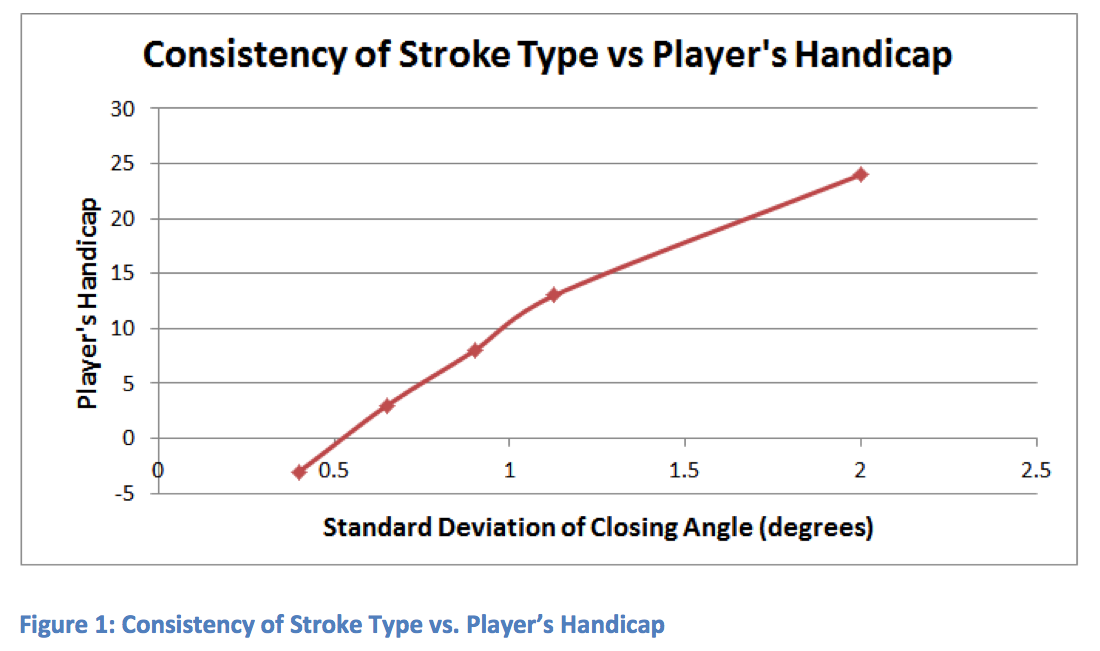
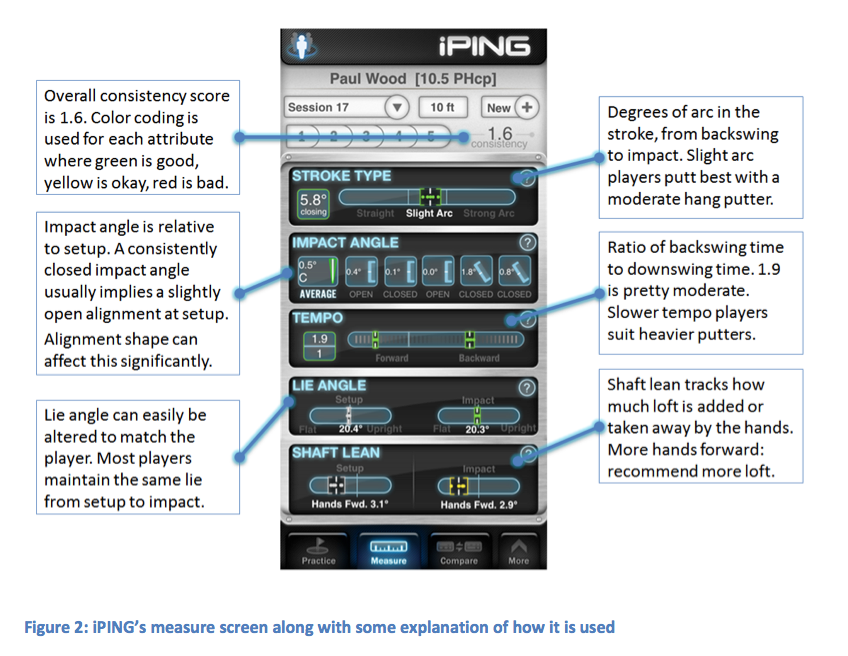




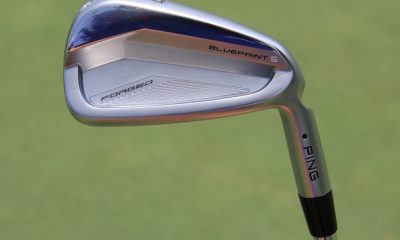





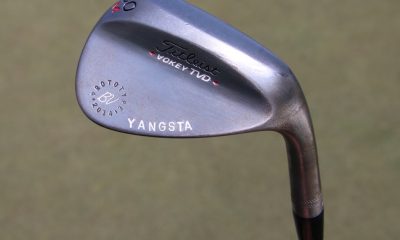

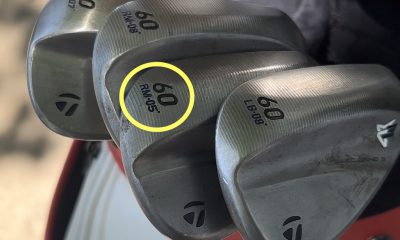
















Anna Simon
Nov 4, 2015 at 5:10 pm
Hi Paul,
I am currently working with a company that is building a new product that helps golfers improve and analyze their golf swing, taking a multi-sensor approach to the swing analyzers products on the market. The product’s Kickstarter will be launching later this month. Would you like us to get in touch with you to test the product? If so, please send me your email to [email protected].
Many Thanks,
Anna Simon
Ian Jones
Feb 10, 2015 at 8:23 pm
Yes – bought it for the galaxy S3 (even got the S3 because Ping did this alleged great app)….. AND….of course it didnt work. very disappointed. Surprisingly Ping customer service didnt seem to want to know when I called. Was there a recall since it didnt work ? Now have a $30 piece of plastic sat in a box, keeping company with old yardage books.
killerbgolfer
Feb 8, 2015 at 10:27 pm
Love what you do PING. Consistently the most progressive company with outstanding products and service.
Mike
Feb 7, 2015 at 3:05 pm
Do Ping have plans to release an iPhone 6 cradle? I’m lost without one.
Rene Realme
Feb 6, 2015 at 4:27 pm
Galaxy S4 cradle please!
Mark
Feb 6, 2015 at 3:27 pm
So any thoughts on providing this app for Android users who are 50% of the smartphone market??????
Paul Wood
Feb 6, 2015 at 6:50 pm
Unfortunately, the android platform makes this really tough. There’s so much variation in phones and sensors. We looked at it seriously and even briefly released a version for the Galaxy S3 but even just that 1 model had something like 10 different hardware versions, so it made it almost impossible to ensure functionality and accuracy. Maybe we’ll have to look at something where we use a MEMS device instead of the phone to link up to iPing as a solution for Android users. We’ll keep looking!
Mike Olsen
Feb 6, 2015 at 12:53 pm
Paul,
Just curious as to how the iPing data stands up to the SAM Puttlab output…both in terms of accuracy and consistency of the data? Thanks
Paul Wood
Feb 6, 2015 at 6:54 pm
We have a SAM Puttlab in our lab and we used both the SAM and high speed video data to check the accuracy and consistency of our data. I myself was surprised how good the phone’s sensors did in our testing. Clearly there are quite a few aspects of the putt that the SAM measures that we don’t but the SAM is quite a big investment for someone.
John Grossi
Feb 6, 2015 at 5:42 am
Paul, Thanks for this explanation on Ping’s putter app. However, I am interested in Ping’s NFlight(sp) device. Would you consider an article on it? These MEMS devices are very interesting on how they relate to the golf swing.
Paul Wood
Feb 6, 2015 at 11:00 am
I’d certainly be very happy to do an article on nFlight. I might try to cover a couple of other topics relating to club technology or golf physics first but I’ll try to come back to fitting tools again. I’m really interested in MEMS technology personally – it would be a pleasure to write more on the subject.
mike
Feb 5, 2015 at 5:16 pm
Great product. It is very consistent and helped me to slow down my putts.
Golfraven
Feb 5, 2015 at 2:40 pm
The cradle still fits the iphone 5 but I am not sure I tested it never iphone 6 model. reminds me to take it out of my golf bag locker and use it again. Saddly the app is lacking better stats analysis and is not showing dates when you did the putting therefor difficult to compare unless you write dates in your notepad. i agree that putting with the phone does not affect the stroke itself but I feel the weight of it and also the impact sound is slighly different. however it is great tool which provides important data on stroke type, tempo, shaft lean, lie angle etc.. I would say biggest feedback is weather your stroke is consistent, independent of how you roll the ball. I am close to +PHcp and it helps me to focus when practicing. All pros are around +4 and comparing against those is good indication what your putting is lacking. So as with anything in golf, consistency is key
MS
Feb 5, 2015 at 4:38 pm
Golfraven – On the “Measure” screen, you can change the name of each session. Look at the picture above where it says “Session 17” – if you tape on the name (not the drop down arrow), it will bring up the keyboard and you can change the session to a date or whatever you would to call it.
The best way to utilize this is on a day when you are putting well. Take a quick session and save it by date, “good putting day”, etc so you know where to find it. Then you will have it stored what your stats are when you are rolling it well. Helps you go back and compare when you have an off day and can help figure out why.
Golfraven
Feb 5, 2015 at 5:48 pm
Thanks for the hint, much appreciated. been using this now for last 2-3 years and never figured it out.
bph
Feb 5, 2015 at 1:41 pm
How does it work? The answer is it doesn’t. Be careful before buying this. The app has been broken for at least a year (on iPhone at least), leaving me with a useless $30 piece of plastic.
MS
Feb 5, 2015 at 4:39 pm
Have you tried deleting the app and reinstalling?
Paul Wood
Feb 5, 2015 at 6:29 pm
I’m really sorry to hear your app is not working correctly. Our application support would be happy to help you get that figured out. Their number is 855-687-5700 or [email protected] We do our best to make sure it works for as many people as possible, but I’m not going to lie, making apps is hard when hardware and software are progressing at such a fast pace.
Ed
Feb 5, 2015 at 1:08 pm
I have one for my iphone4, which i don’t have anymore..
Will ping discount if i get one for iphone 5 or 6?
Double Mocha Man
Feb 5, 2015 at 1:05 pm
The app works great. But finding a cradle that fits my phone is problematic. So I’ve used duct tape in the past. One more use for duct tape…
Tom Stickney
Feb 5, 2015 at 10:29 am
It’s a great tool for sure.